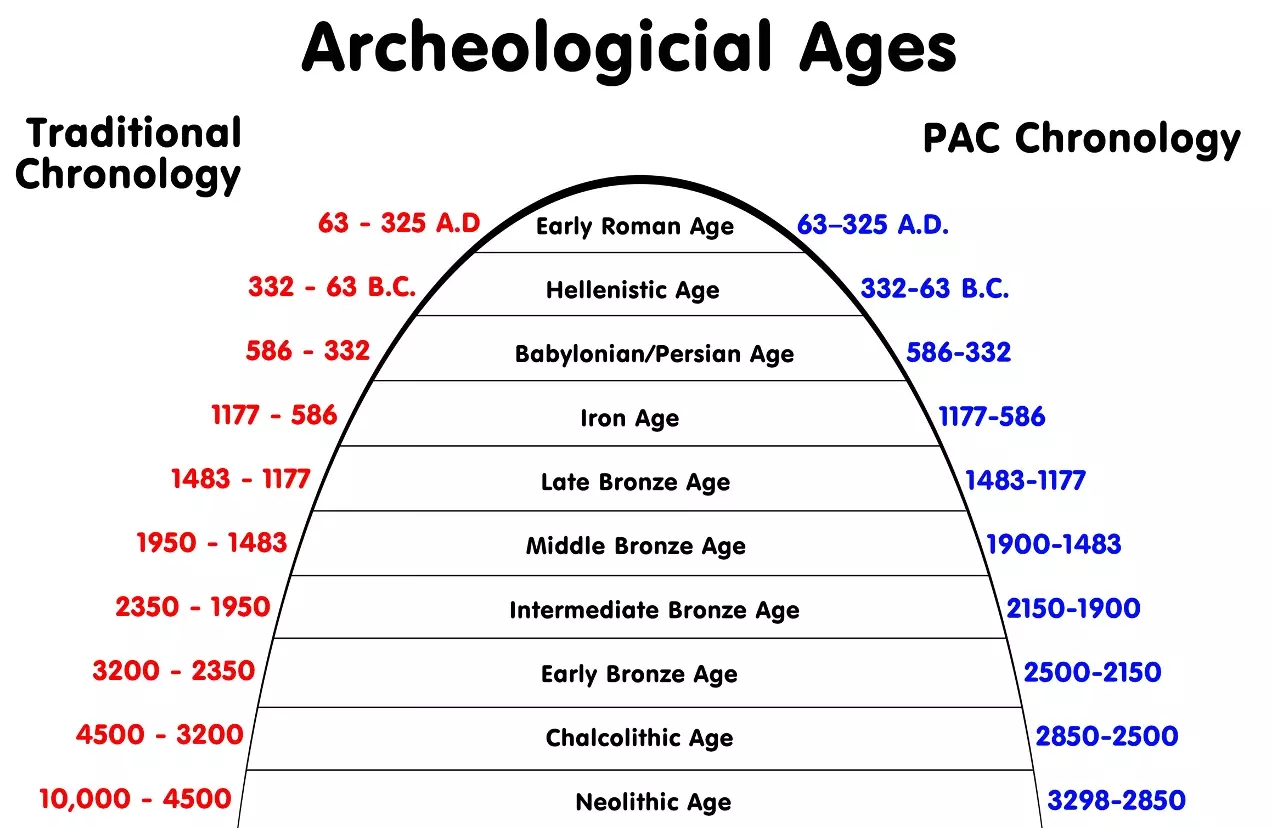The chart of archaeological periods is a system used by archaeologists to classify the different stages of human history. It is based on the development of human technology, such as the use of stone, metal, and pottery. The chart is divided into three main periods: the Stone Age, the Bronze Age, and the Iron Age.
Stone Age
The Stone Age is the earliest period of human history, lasting from around 2.6 million years ago to around 3,300 BC. It is divided into three sub-periods: the Paleolithic, Mesolithic, and Neolithic.
- Paleolithic (2.6 million years ago - 10,000 BC): This was the longest period of human history, and it was characterized by the use of simple stone tools, such as hand axes and scrapers.
- Mesolithic (10,000 BC - 6,500 BC): The Mesolithic was a period of transition between the Paleolithic and Neolithic. Humans began to develop more sophisticated stone tools, and they also began to domesticate animals and cultivate plants.
- Neolithic (6,500 BC - 3,300 BC): The Neolithic was the period of the first agricultural settlements. Humans began to live in villages and towns, and they developed new technologies, such as pottery and weaving.
Bronze Age
The Bronze Age began around 3,300 BC and lasted until around 1,200 BC. It was characterized by the use of bronze, an alloy of copper and tin. Bronze was more durable than stone, and it allowed humans to develop new technologies, such as weapons, tools, and jewelry.
Iron Age
The Iron Age began around 1,200 BC and lasted until the rise of the Roman Empire. It was characterized by the use of iron, which is a stronger and more versatile metal than bronze. Iron allowed humans to develop new technologies, such as swords, armor, and plows.
Historical Period
The historical period is the period of human history after the rise of the Roman Empire. It is characterized by the development of writing and the rise of complex civilizations. The historical period is further divided into sub-periods, such as the Ancient, Medieval, and Modern periods.
The chart of archaeological periods is a useful tool for archaeologists and historians alike. It provides a framework for understanding the development of human technology and culture over time. The chart is also used to classify archaeological sites and artifacts.
Here is a table summarizing the chart of archaeological periods:
| Period | Dates | Key Characteristics |
|---|---|---|
| Stone Age | 2.6 million years ago - 3,300 BC | Simple stone tools, domestication of animals, cultivation of plants |
| Bronze Age | 3,300 BC - 1,200 BC | Use of bronze, development of new technologies, rise of complex societies |
| Iron Age | 1,200 BC - rise of the Roman Empire | Use of iron, development of new technologies, rise of empires |
| Historical Period | rise of the Roman Empire - present | Development of writing, rise of complex civilizations |
